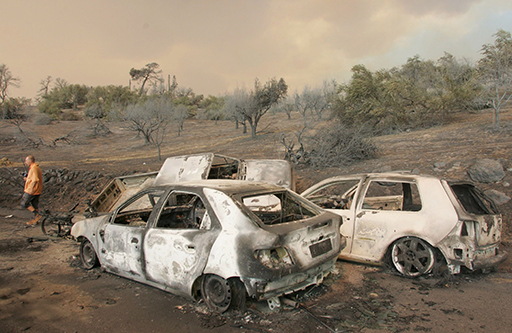2 The 2007 Greek wildfires
During the summer of 2007, wildfires raged across Greece. At the time, they were recorded as the worst natural disaster of contemporary Greek history (Koutsias et al., 2012). The first fire started on the 27 June 2007 and the final fire was extinguished in early September 2007. The fires burnt through dry forests and vegetation, often moving quickly through the landscape (Athanaiou and Xanthopoulos, 2010).

The Greek wildfires of 2007 resulted in a death toll of more than 78 (some estimates are as high as 84 people) including several firefighters. They devastated more than 180,000 hectares of forest and agricultural land, destroyed or effected over 3000 houses, and led to the loss of life of a substantial number of livestock and forest animals (Koutsias et al., 2012).
The most destructive and lethal infernos broke out on 23 August, expanded rapidly, and raged out of control until 27 August, they were finally put out in early September. During August 2007 alone 67 people died as the result of the wildfires.
Like all wildfires, these fires also had a range of long-term effects. Releasing carbon into the atmosphere they contributed to climate change. The damage caused by these wildfires had significant economic consequences for individuals, communities, and the Greek nation. The fires also had long-term physical and mental health impacts. One study has found that victims of the 2007 Greek wildfires had increased symptoms of depression, anxiety, hostility, and paranoia (Adamis et al., 2011). Furthermore, by changing local habitats and ecosystems, the fires had a long-term impact on wildlife.
The next page will explore where these fires were most significant.

